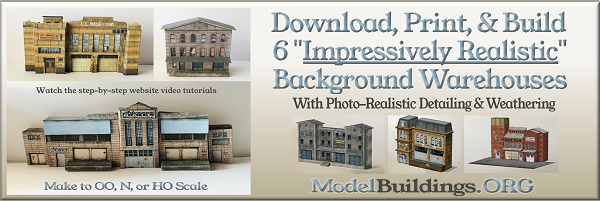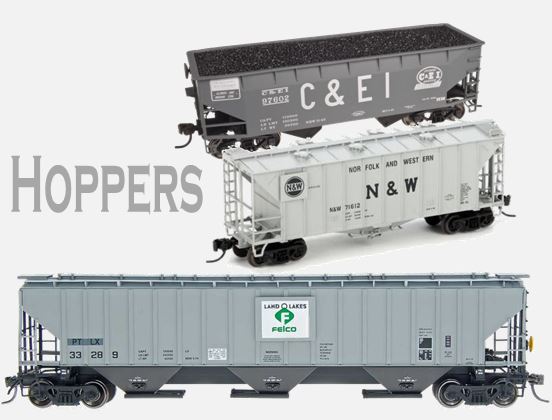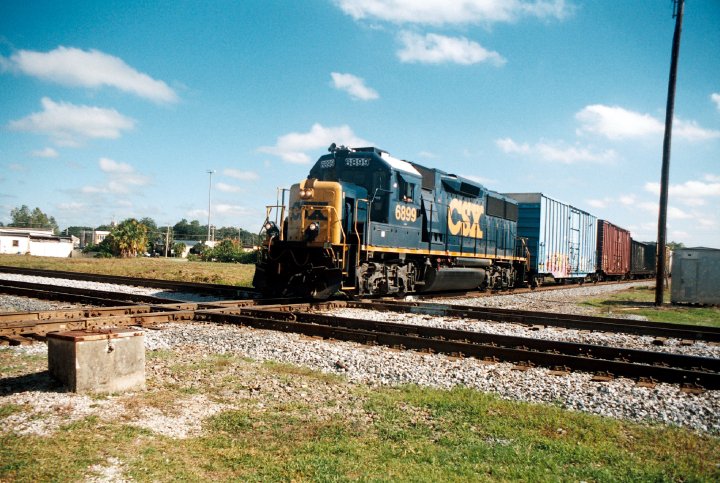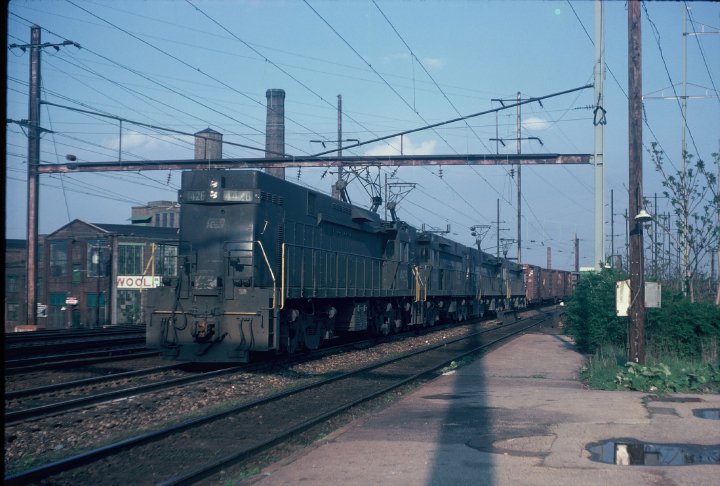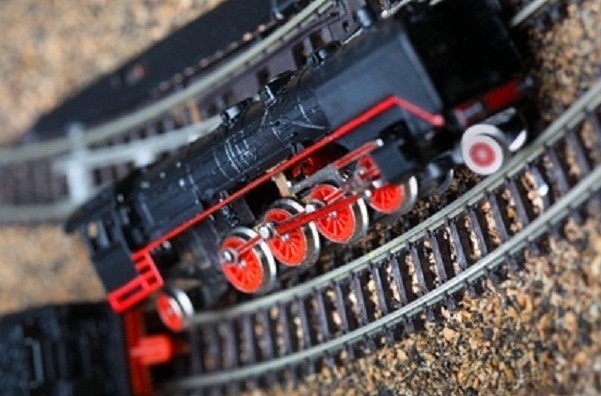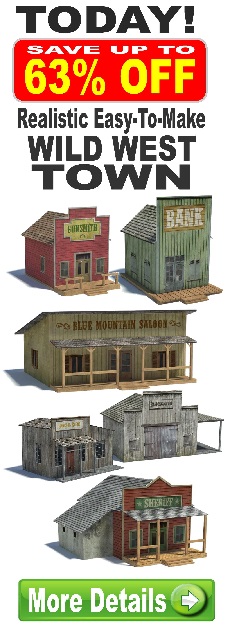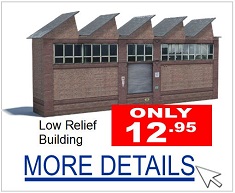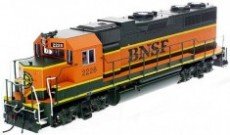Everything on model trains, model railroads, model railways, locomotives, model train layouts, scenery, wiring, DCC and more. Enjoy the world's best hobby... model railroading!
Hopper Cars Add Character To A Layout
Hopper cars are cargo trains, which are used to transport materials like coal, ore and crops. Hopper cars are distinguished from other freight trains because they are automated. An opening at the bottom allows them to load and unload cargo easily. The opening trap door is angled and uses gravitational force to deposit goods. No extra mechanisms are required for the purpose.
Hopper cars are classified into two broad categories; open car and closed car. Open cars are used when the weather does not have an adverse effect on consignments such as coal. Closed cars are used when goods need protection from rain and water such as sugar.
Add your comment.
Fred Shares His Loco Photos
Fred sent in these photos to share and says:
“I have been a rail enthusiast or train spotter as you guys call us since my draft bait days or as you refer to it as National service in my travels I served in Vietnam and Germany I now reside in The Orlando Florida area I used to live in Philadelphia PA. If you ever visit Philly Bring a lot of memory cards or plenty of film or both I have been doing 35 mm photography since my active duty days Color Slides for the most part a lot of my been there and done that’s are Boston Atlanta Ga, & Savannah Ga. Plant City Florida Steamtown USA in Scranton PA. Black River & Western IN Ringoes N.J. Atlantic City N.J and San Diego I really want to share some of my back in the day stuff I hope you guys like these These are at Frankford Junction in Philly I used to live a 10 minute drive 20 minute walk from his location I hope you guys like these.”
Add your comment.
5 Questions From Readers
Although a couple of these questions provide few details, hopefully a reader might be able to assist.
1. John asks readers:
OO Scale Tender Keeps On Spining
Why does my tender keep on spining? It is tender driven and sometimes it runs okay, then it stops then spins like mad. Is it the cogs? It’s brand new. Any ideas?
2. James asks:
HO Bachmann DCC Control
“I turn on the power and I get blinking red lights, but the engine will not run. I checked my wiring and can’t locate a problem. What would be the cause?”
3. Bernie asks readers:
L-Girder Tables – N Scale
“Does somebody out there know where I can get a diagram of how to cut a 4×8 3/8 plywood to make a table as well as directions on how to assemble and a part list of bolts nuts washers screws glue height adjusters?”
4. Denny asks readers:
Airport Ideas
“I want to add a local airport to my HO layout. Where can I buy 1:100 scale single engine aircraft?”
5. Jean asks readers:
Derailment at Point on Curve
I have a point at the beginning of a curve and the OO engine derails at this point every time – any suggestions – unfortunately I have had the pints wired up and are fixtures. Help please?”
Add your comments.
Tips to Avoid Model Train Derailments
Derailments are frequent and very annoying when you are trying to build a perfect railroad track. Here are a few tips to avoid them.
–> The joints must be well aligned and the gap between them must be kept to a minimum. The track should be smooth when you rub a finger over it.
–> Solder your sectional pieces in the end so that they remain fixed at one position.
–> The track gauge should neither be tight nor wide. If the track gauge is too tight the wheels could ride up and cause a derailment. If it is too wide the wheel flanges won’t span the track correctly, potentially causing a derailment. Heating the rail with a soldering iron can allow for the rail to be adjusted into position.
–> Make sure the switch points don’t grab the wheels. This sometimes happens with new switch points. A file can be used to carefully smooth the points (moveable parts) to achieve a smooth transition. Inspect the rail gauge when in each position.
–> The wheels must move freely and contact the rails evenly.
–> Ensure couplers don’t snag and are properly centered.
–> Check the length of your longest car if you are making an S-shaped track. It needs to be able to enter and exit the S curve without derailing.
–> Add additional weight to cars if they are too light. Aim for a low center of gravity with the weight in the towards the centre of the cars.
–> Lubricate frequently. If wheel sets are incorrectly aligned, out of gauge, or not rotating freely, they could cause a derailment. However, use oil sparingly as it does attract dust.
Add your suggestions and comments.
Model Railroading – Then and Now (infographic)
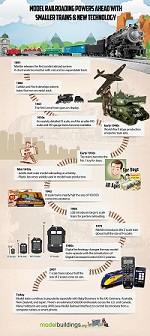 If you have never heard the term “infographic” it basically refers to information that is presented as a graphic. Infographics are an easy and interesting way to learn new things.
If you have never heard the term “infographic” it basically refers to information that is presented as a graphic. Infographics are an easy and interesting way to learn new things.
Here is an example of an fascinating infographic about the changes in Model Railroading through the years. It shows the trends and how the hobby is developing. It makes for interesting reading and is well worth sharing with friends.
Click here to view the infographic full size.
Also, if you have a website, facebook page, or blog you can publish the full size infographic provided it is not altered in any way. Details are on the webpage when you click the link above.
Enjoy!
Rewiring Locomotives
Brent from the UK sent in this tip:
I have a roll of magnet wire I use for rewiring locomotives and on rolling stock. This type of wire is normally used in the coils for twin solenoid switch machines and in motors. You will need to scrape away the enamel coating prior to using it. I find that small flexible wires are best on rolling stock.
Add your comments.
Steps to Prototypical Designing
![]() If you are new to model trains, then you’re at a loss about where to start from. Prototypical designing is just for people like you. It allows the entire railroad to be modeled according to a real system. This eliminates possibilities where trains might not be on schedule or not operate at all.
If you are new to model trains, then you’re at a loss about where to start from. Prototypical designing is just for people like you. It allows the entire railroad to be modeled according to a real system. This eliminates possibilities where trains might not be on schedule or not operate at all.
- Use Google maps to get an idea of real tracks. Take any system you like as your guide and model your track according to it.
- Find out train operations of the track you choose.
- Compress the model according to a suitable scale.
- You may use software to find the credibility of your design, before preceding with the actual model.
What Do You Mean By Layout Ground Cover?
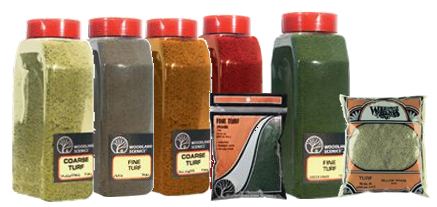 The layout ground cover is basically the ‘vegetation’ or landscape that covers the outer surface of your model train layout and is intended to hide the plaster, wires and form that coat your terrain. Layout Ground Cover is a very important part of your scenery and is vital to bring out the realism in the whole project.
The layout ground cover is basically the ‘vegetation’ or landscape that covers the outer surface of your model train layout and is intended to hide the plaster, wires and form that coat your terrain. Layout Ground Cover is a very important part of your scenery and is vital to bring out the realism in the whole project.
The layout ground cover is divided into – low, medium and high. The low area incorporates the coloring of the surface with small elements like grass, and other plants. Medium includes taller plants like weeds, medium sized vines and bushes. High on the other hand includes tall grasses, larger bushes and shrubs.
A great tip in creating layout ground cover is to use a variety of textures and shades to bring a much more realistic outlook than the use of a single shade of color. The realism of the layout ground cover totally depends upon the imagination of the modeler.
I wish I Could Sketch Like This!
Watch this short video if you are thinking about constructing some model buildings for your layout.
Enjoy!
What Local Freights Do
Local freights are also known as peddlers and way freights. Their prime responsibility is to drop certain cars off and pick certain cars up at different towns. So local freights usually make a stop at every town and perform their respective task. When compared to fast freight, thorough freight and passenger trains, local freights are relegated to a second class status. This means that if one of the three trains mentioned above is on the track, then the local freight has to make way for them to pass first before it can carry on with its operations.
This photo shows a consist of HO scale freight wagons stationed in front of some industrial storage warehouses. The scale buildings have been constructed from corflute in low relief and are glued to a photographic backdrop. Corflute is what waterproof real estate signs are made from and can be purchased for under $10 for a very large sheet (makes several buildings) from a DIY store.
The plans for these model railroad buildings can be downloaded here.
Ideas For Cabling Wires (supplied by Ben)
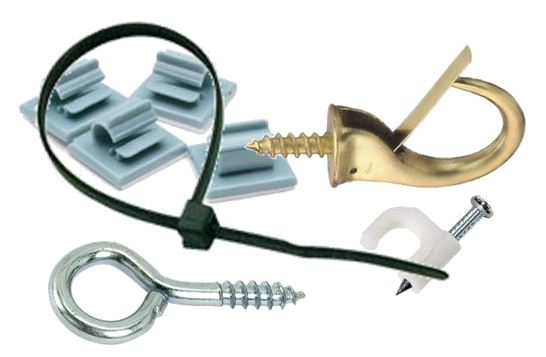 Ben sent in this idea to share:
Ben sent in this idea to share:
I have used several inexpensive techniques for keeping wiring together. The wires still need to be easily accessed if you need to add or remove a wire. This photo shows some of the methods I have used. I only add a plastic cable tie when I’m finished wiring the cable. If you are using metal screw eyes it is worth opening the neck slightly so you can remove, add, or simply move a wire.
Add your comment.
Wye Loops As Explained By Jack
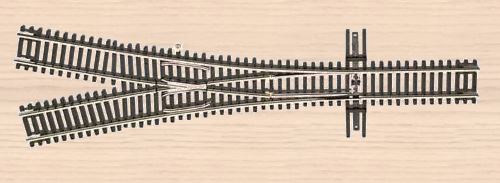 Jack sent in this short article to share:
Jack sent in this short article to share:
A wye track is shaped like the letter ‘Y’ where tracks merge into a single one and single tracks diverge into two tracks. The track is designed like this because it allows easy turning of locomotives and routes trains to another track without reversing. It can be part of a junction or used in place of a turntable.
A wye track is connected in isolated blocks. If continuous wiring was employed, a short circuit would occur. Therefore, the track is wired in different blocks where each block is electrically isolated from adjacent ones. A Digital Command Control (DCC) system achieves this.
Add your comment
Corflute and Foam Board Useful (and cheap) Model Railroading Construction Materials
When you consider the cost of buying locomotives, construction products like foam board and corflute are incredibly cheap to buy. A huge sheet of corflute (like they use on real estate signs) cost less than $10 at a local DIY store and was large enough to construct several model buildings. What’s more, the material is very strong and very easy to work with.
This video shows how to use corflute board for constructing a model railroad building.
The plan in this video can be downloaded here.
